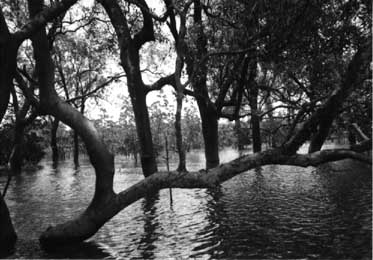
http://www.worldwildlife.org/wildworld/profiles
From Florida Bay to the coniferous pine forests hundreds of miles inland, the greater Everglades ecosystem expands over 1.5 million acres of fresh and saltwater, marshes, swamps, and dry lands. The area contains temperate and tropical plant communities, and each of these unique ecosystems supports a thriving, perfectly adapted habitat.
The Everglades is a unique wetland area in that most of its water flow is derived from rainwater. The source of most other marshes and wetlands are large rivers that flow into them. The sluggish flow of water over shallow, broad, marshy vegetation inspired its name River of Grass, coined by Douglas in 1948. 80% of this crucial rainfall occurs in summer months, characterized by thick humidity and extraordinary, subtropical temperatures. Winters are mild and somewhat dry; during the cooler months, the "River of Grass" dries considerably, becoming more of a swampy savanna, lacking the free flowing water (source: http://www.worldwildlife.org/wildworld/profiles ).



